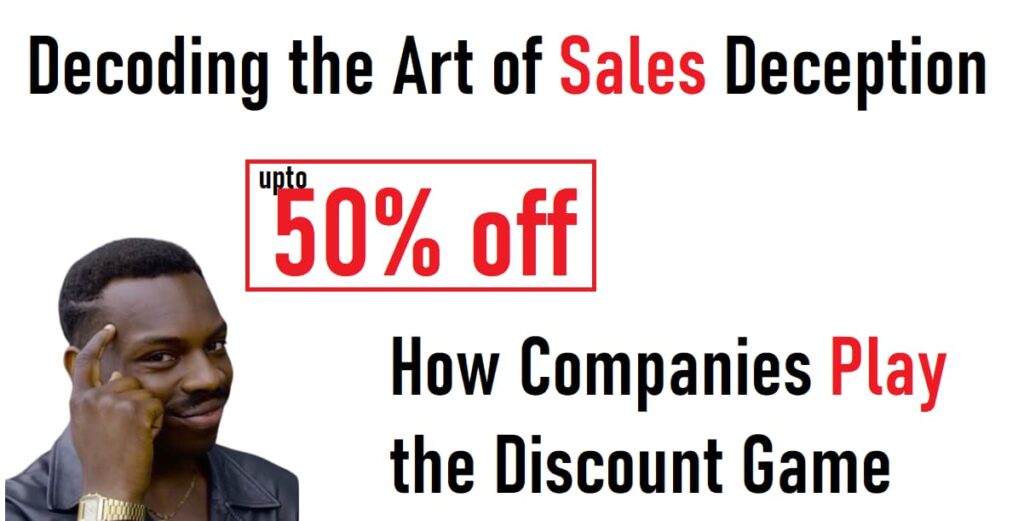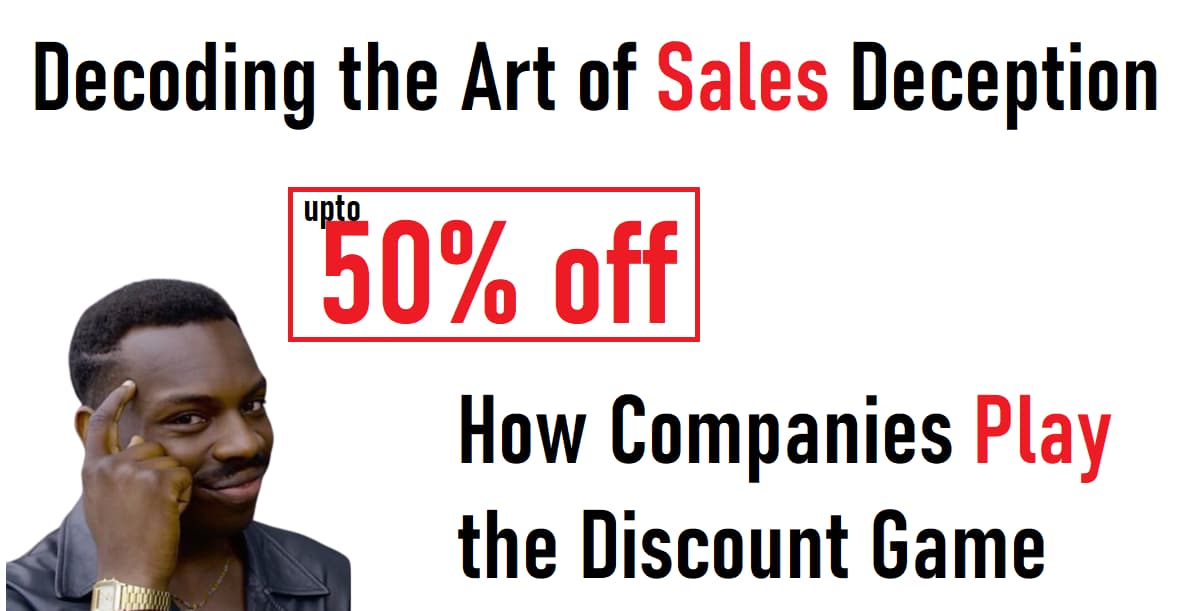In the ever-evolving world of consumerism, companies have mastered the art of playing with our perceptions, desires, and wallets. One of their most cunning strategies involves the illusion of discounts. You think you’re getting a fantastic deal, but there’s often more to the story than meets the eye. In this article, we’ll delve deep into the tactics companies use to fool you during sales, the psychology behind it, and how you can navigate this complex retail landscape.
The Illusion of Discounts
At first glance, a sale seems like a win-win situation for both consumers and companies. Shoppers get products at lower prices, while businesses move inventory. However, it’s not always that straightforward. Companies employ a range of deceptive techniques to make you believe you’re getting a bargain when, in reality, you might just be paying what the product is truly worth.
Here’s a classic trick: inflating the original price. Let’s say a company plans to sell a product for $100. Instead of launching it at that price, they list it at $200. Then, when they announce a 50% discount during a sale, you believe you’re saving big bucks, but you’re actually paying exactly what the company intended all along.
To illustrate, consider the following table:
| Product | Original Price | Sale Price | “Discount” |
|---|---|---|---|
| Widget X | $200 | $100 | 50% |
In this example, the company lures you in with a 50% discount, but in reality, they were always planning to sell the product for $100.
The Psychological Game
Understanding the psychology behind sales tactics is crucial to avoid falling into the discount trap. Companies capitalize on our cognitive biases and emotions, making it challenging to resist their offers.
Fear of Missing Out (FOMO)
Sales often come with a ticking clock – limited-time offers that create a sense of urgency. You fear missing out on a fantastic deal, which compels you to make impulsive purchases. Companies exploit this fear to push their products.
Anchoring Effect
The anchoring effect involves presenting a high initial price as a reference point. When you see the original price before a discounted one, your brain anchors to the higher figure, making the reduced price seem more attractive than it actually is.
Let’s use a list to highlight these psychological tactics:
- Fear of Missing Out (FOMO): Limited-time offers and countdown timers.
- Anchoring Effect: Displaying the original price alongside the sale price.
Who Are Sales Really For?
Sales aren’t always designed with savvy shoppers in mind. In fact, they often target individuals who aren’t price-conscious or don’t have the time to track product costs meticulously. For the average consumer, the allure of a sale is strong, and they’re less likely to scrutinize prices.
Imagine you’re a frequent visitor to an online electronics store, keeping a close eye on the prices of your desired gadgets. You’ve noticed that the prices fluctuate regularly, but when a sale event is announced, the prices seem to drop significantly. It’s easy to think you’re getting a steal, but here’s the catch: those who don’t follow these price trends might not realize that the so-called sale price is just a return to the product’s regular cost.
In essence, sales are a continuous cycle designed to attract those who are less informed about price changes. It’s a strategy to create a sense of excitement and encourage impulse buying among a wider audience.
Real-Life Examples
To illustrate these tactics in action, let’s take a look at some real-life examples:
Example 1: Fashion Retailers
Fashion retailers are notorious for playing the discount game. They often inflate the original prices of clothing items, making you believe you’re getting a designer piece at a fraction of the cost during a sale. In reality, you might be paying what the garment is actually worth, if not more.
Example 2: Online Marketplaces
Online marketplaces like Amazon frequently use dynamic pricing algorithms. This means that product prices can change multiple times a day based on demand, inventory levels, and even your browsing history. During a sale, these algorithms might lower prices to attract more buyers, but it’s crucial to check the price history to determine if the deal is genuinely worth it.
Navigating the Sales Maze
Now that you’re armed with the knowledge of how companies play the discount game, here are some tips to help you navigate the sales maze effectively:
- Research Regular Prices: Before jumping into a sale, research the regular prices of products you’re interested in. This will give you a benchmark to assess the actual discount.
- Price Tracking Tools: Use online tools or browser extensions that track price history. This can help you determine if the sale price is indeed a deal or just a return to the standard cost.
- Set a Budget: Decide how much you’re willing to spend before entering a sale. This will help you avoid impulsive purchases driven by the fear of missing out.
- Read the Fine Print: Pay attention to sale terms and conditions. Some discounts may come with limitations or require you to buy additional items to qualify.
- Compare Offers: Don’t limit yourself to a single store. Compare prices and deals across different retailers to ensure you’re getting the best value.

Let’s create a table summarizing these tips:
| Tips for Navigating Sales | Explanation |
|---|---|
| Research Regular Prices | Establish a baseline to gauge the authenticity of discounts. |
| Price Tracking Tools | Utilize online tools to track price histories and spot genuine deals. |
| Set a Budget | Prevent impulsive buying by setting a budget before browsing sales. |
| Read the Fine Print | Ensure you understand the terms and conditions of sale offers. |
| Compare Offers | Explore multiple retailers to find the best deals and value for your money. |
Final Thoughts
Sales can be a thrilling experience, but they can also lead you down a rabbit hole of deceptive pricing strategies. Companies employ tactics like inflating original prices and leveraging psychological biases to make their discounts appear more enticing than they truly are. Understanding these techniques and adopting smart shopping habits can help you make informed decisions and avoid falling prey to the allure of deceptive sales.
Remember, knowledge is your most potent weapon when navigating the world of consumerism. By staying informed and vigilant, you can truly score the best deals and ensure that your hard-earned money is spent wisely. So, the next time you see a flashy “SALE” sign, approach it with a discerning eye, and don’t let companies fool you into emptying your wallet.










